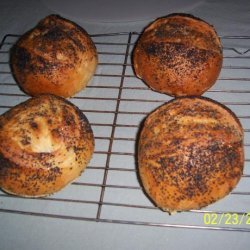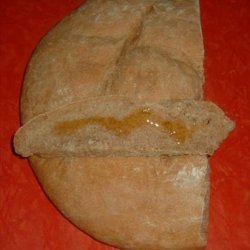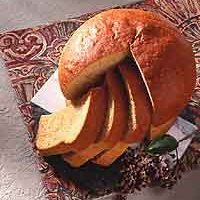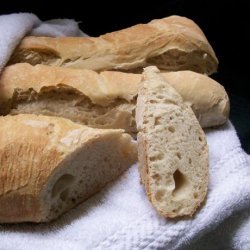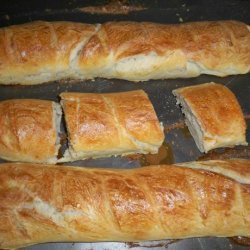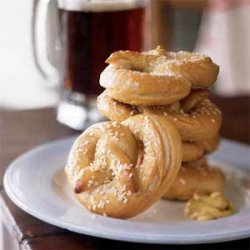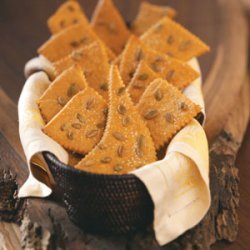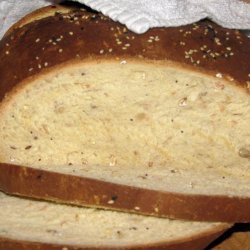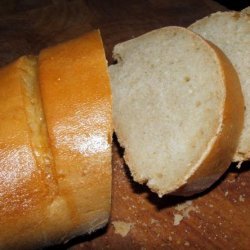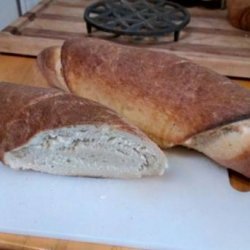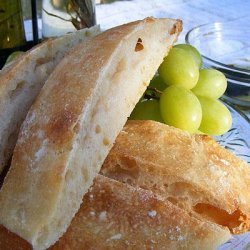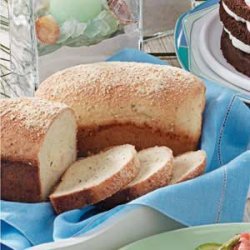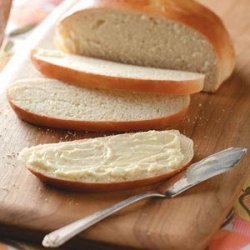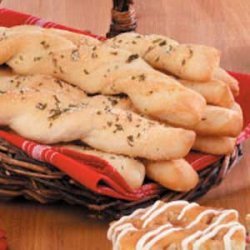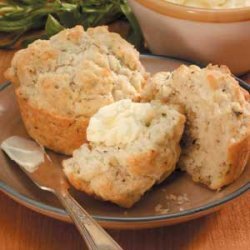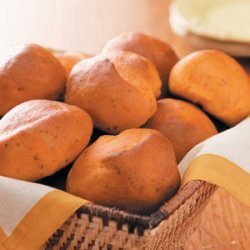Directions:
- BIGA: Mix all the ingredients together in a medium bowl and stir vigorously with a wooden spoon for 2 to 3 minutes, until a smooth, somewhat elastic batter has formed.
- The batter will be very stiff; it gets softer and more elastic after it has proofed.
- You may find it easier to mix the sponge using electric mixer, with a paddle or a dough hook, on medium speed for 1 to 2 minutes.
- Scrape the sponge into a 2-quart clear plastic container and cover with plastic wrap.
- At this point you have two options: If you plan to make your dough later that same day, let the sponge rest at room temperature until it has risen to the point where it just begins to collapse.
- This may take from 6 to 8 hours, depending on the temperature of the sponge, the temperature of the room, and the strength of the yeast.
- The sponge will triple in volume and small dents and folds will begin to appear in the top as it reaches its peak and then begins to deflate.
- The sponge is now in perfect condition to be used in a dough.
- It's best if you have already weighed or measured out all of your other recipe ingredients before the sponge reaches this point so you can use it before it collapses too much.
- If you're not planning to make your dough until the next day or the day after, put the covered sponge in the refrigerator and let it rise there for at least 14 hours before taking it out to use in a recipe.
- Be sure to compensate for the cold temperature of the starter by using warm water (85 to 90 degrees) in the dough instead of the cool water specified in the recipe.
- Or let the starter sit out, covered, until it reaches room temperature (this may take several hours)-but don't let it collapse to much before you use it.
- BREAD: Combine the warm water and yeast in a large bowl and stir with a fork to dissolve the yeast.
- Let stand for 3 minutes.
- Add the cool water and biga to the yeast mixture and mix with your fingers for about 2 minutes, breaking up the biga.
- The mixture should look milky and slightly foamy.
- Add the flour and salt and mix with your fingers to incorporate the flour, scraping the sides of the bowl and folding the ingredients together until the dough gathers into a mass.
- It will be wet and sticky, with long strands of dough hanging from your fingers.
- If the dough is not sticky, add 1 tablespoon of water.
- Move the dough to a lightly floured surface and knead for about 5 minutes, until it becomes supple and fairly smooth.
- This is a sticky, wet dough; don't be tempted to add more flour to the work surface.
- Just dust lightly and use a dough scraper as necessary to loosen the dough from the table during kneading.
- Allow the dough to rest for 15 minutes, covered with oiled plastic wrap (This rest period is the autolyse.) Knead the dough 3 to 5 minutes, until it is stretchy and smooth, yet still slightly sticky.
- Shape the dough into a loose ball, place it in a lightly oiled bowl, and turn the dough in the bowl to coat with oil.
- Cover the bowl tightly with plastic wrap and let the dough rise at room temperature (75 to 77 degrees F) for about 1 hour, or until the dough looks slightly puffy but has not doubled.
- Place the dough in the refrigerator for at least 8 hours, or preferably, overnight to let it relax, develop flavor, and become more manageable.
- Take the dough from the refrigerator and let it sit at room temperature for 1 to 2 hours, until it begins to warm up and starts to rise.
- Flour a work surface well and gently dump the dough onto it.
- Divide the dough into three equal pieces, about 13 ounces each.
- Gently flatten one piece, pressing out some of the air bubbles, and stretch it into a rectangle.
- Fold the top third down and the bottom third up as if you were folding a business letter.
- Now form the loaf into a short baguette by rolling the dough over from left to right and sealing the seam with the heel of your palm.
- Fold the dough over about 1/ 3 of the way each time, seal the length of the loaf, then repeat.
- You want to gently draw the skin tight over the surface of the loaf while leaving some air bubbles in the dough.
- Seal the seam, being careful not to tear the skin of the dough or deflate its airy structure.
- Do not elongate.
- These loaves are about 10 inches long.
- Cover an area on the work surface with a thick layer of flour and place the loaf, seam side down, on the flour.
- Repeat with remaining pieces of dough.
- The loaves will be loose and slightly irregular in shape.
- Leave plenty of space between the loaves they will spread as they rise.
- Cover the loaves with well oiled plastic and let them rise for 1 to 2 hours, until bubbly and loose.
- Thirty minutes before baking, preheat the oven to 475 degrees F.
- Place a baking stone in the oven to preheat and position an oven rack just below the stone.
- Sprinkle a peel very generously with cornmeal.
- Line an upside-down baking sheet with parchment paper and sprinkle very generously with cornmeal.
- Lift one loaf, flip it over so the floured side is on top, and gently tug on the ends to stretch the loaf to the full length of the peel, or about 14 inches on a pan.
- Repeat with the remaining loaves, placing 2 on the peel and 1 on the pan.
- Dimple each loaf with your finger in about 6 places, but don't deflate them too much.
- Be sure the loaves are loosened from the peel, then carefully slide them onto the baking stone.
- Place the pan of bread on the rack below the stone.
- Using a plant sprayer, quickly mist the loaves with water 8 to 10 times, then quickly shut oven door.
- Mist the loaves again after 1 minute.
- Then mist again 1 minute later.
- Bake for about 10 minutes, then reduce the temperature to 450 degrees and bake 15 minutes longer or until the loaves sound slightly hollow when tapped on the bottom and the crust is a medium to dark brown.
- (If the crust is not brown enough, the loaves will soften as they cool.) Transfer the bread to a rack to cool for at least 30 minutes before serving.
Nutrition Facts
| Amount Per 1 Serving | |||
| Calories | 533 Kcal (2232 kJ) | ||
| Calories from fat | 13.61 Kcal | ||
| % Daily Value* | |||
| Total Fat | 1.51g | 2% | |
|---|---|---|---|
| Sodium | 1418.76mg | 59% | |
| Potassium | 162.41mg | 3% | |
| Total Carbs | 111.11g | 37% | |
| Dietary Fiber | 4.56g | 18% | |
| Protein | 14.85g | 30% | |
| Iron | 7.3mg | 41% | |
| Calcium | 32.9mg | 3% | |
| Amount Per 100 g | |||
| Calories | 206.27 Kcal (864 kJ) | ||
| Calories from fat | 5.26 Kcal | ||
| % Daily Value* | |||
| Total Fat | 0.58g | 2% | |
|---|---|---|---|
| Sodium | 549.05mg | 59% | |
| Potassium | 62.85mg | 3% | |
| Total Carbs | 43g | 37% | |
| Dietary Fiber | 1.76g | 18% | |
| Protein | 5.75g | 30% | |
| Iron | 2.8mg | 41% | |
| Calcium | 12.7mg | 3% | |
* Percent Daily Values are based on a 2000 calorie diet. Your daily values may be higher or lower depending on your calorie needs.
Find out how many calories should you eat.
Get Your Recipe of Health!
Follow RecipeOfHealth on Facebook!


